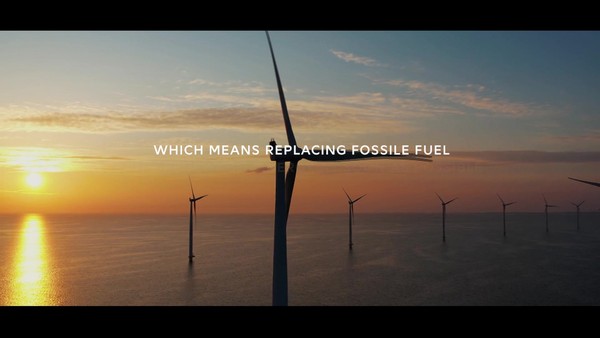Sustainable Development Goals > People
THE HARMACY
OGILVY AFRICA, Nairobi / GERTRUDE'S CHILDREN'S HOSPITAL / 2023

Overview
Credits
OVERVIEW
Background
Kenyan households dispose of an estimated 1,800,000 kilograms of expired medicines every year, by throwing them in garbage bins or flushing them down toilets. This improper disposal of expired medicines causes serious environmental and health consequences as they can leach hazardous chemicals into our soil and water, contaminating the environment.
The more immediate and dangerous problem that occurs when these medicines end up in landfills, is that they are often collected by waste pickers and redistributed, through unlicensed pharmacies and underground channels, before being sold to underserved communities who are desperate for affordable treatment.
Unfortunately, the consumption of expired medicines leads to antibiotic resistance, worsening illness and even death.
Describe the cultural / social / political climate and the significance of the work within this context
There is a serious lack of awareness when it comes to safe disposal practices of unused and expired medicine in Kenya. With impoverished communities, and a deep economic disparity between those who are discarding the medication and those who are desperate enough to purchase it. Communities like Dandora suffer the brunt of the problem as redistribution and consumption of these medicines leads to antibiotic resistance, worsening illness, and even death.
The Harmacy, and the launch of the #DispoSafely campaign, was the first of its kind in Africa.
The project aims to educate the general public of the unintentional consequences of unsafe disposal practices that over 48 million Kenyans engage in, while offering a solution that they could begin taking part in through one of Kenya's most trusted healthcare providers, Gertrude’s Children Hospital. Safe disposal was made available at all Gertrude's Children's Hospital branches and pharmacies across the country.
Describe the creative idea
Every time we throw our expired or unused medicines away in garbage bins or flush them down toilets, we unintentionally contribute to the harm caused to the environment and, more importantly, people in affected areas who are desperate to enough to resort to buying black market medication.
To raise awareness among the public on safe disposal methods, we constructed The Harmacy; a pharmacy located in the country’s largest landfill, which was stocked entirely with discarded expired and unused medicine found at site, at Dandora.
Describe the strategy
As 85% of Kenyans dispose of their medicine incorrectly, there was a necessity to educate the public on safe disposal methods and bring the harm they unwittingly cause to their attention. The solution was to educate the public via our DispoSafely campaign, allowing safe disposal at every Gertrude's Children's Hospital branch and pharmacy in Kenya.
The pharmaceutical waste collected at these locations was then properly incinerated and disposed of by the hospital, per Kenyan Government and International guidelines.
To drive people to these #DispoSafely locations (Gertrude's Children's Hospital Pharmacies), we first needed to adequately draw their attention to the problem; pharmaceutical waste doesn’t belong in household garbage bins and that waste, unfortunately, finds its way to underground pharmacies, not unlike our Harmacy.
Describe the execution
At Kenya’s largest landfill, located in Dandora slum, Gertrude’s Children’s Hospital constructed an ambient OOH structure; a mock pharmacy using materials found on-site and stocked entirely with medicine and pharma-waste intercepted, just before reaching the landfill.
The Harmacy featured exterior signage, shelf displays, a make-shift isle, and a checkout register. Banners outside The Harmacy gave facts on unsafe disposal in the region and informed visitors about the #DispoSafely program.
On the day of our special build construction and activation, there just so happened to be a surprisingly large delivery of expired medicines, disposed by a pharmacy, no less, which we intercepted and used to fully stock The Harmacy. This stock was obviously removed by our team and disposed of correctly.
We then used The Harmacy event to launch #DispoSafely - a program that facilitated the collection and safe disposal of these potentially harmful medicines.
Describe the results / impact
The Harmacy became Africa’s first successful public awareness and action campaign to educate the public on the correct disposal methods, reaching nearly half of Kenya's entire population. This led to the launch of #DispoSafely, a program that dispenses valuable information to the public and facilitates the collection and safe disposal of expired medicine through Gertrude’s Children’s Hospital branches countrywide. This campaign is just three weeks old and we're looking to rapidly scale up as the year progresses.
Since the first week of April, we've received attention from some of East Africa's leading outlets like Kiss FM, Power FM, Hope FM, HomeBoyz Radio, Citizen TV, K24 TV and Look-UpTV.
Our initial reach target of 5,325,000 exceeded by over 500%, reaching 28,795,000.
We received an earned value of KES 19,500,000. With online impressions at 11,382,997 and growing.
For every KES 1 spent, we earned KES 30.
8/10 Kenyans polled agreed to #DispoSafely
Is there any cultural context that would help the jury understand how this work was perceived by people in the country where it ran?
There is a serious lack of awareness when it comes to safe disposal practices of unused and expired medicine in Kenya. The issue poses an urgent health crisis, with impoverished communities suffering the brunt of the problem as redistribution and consumption of these medicines leads to antibiotic resistance, worsening illness, and even death.
The Harmacy, and the launch of the #DispoSafely campaign, was the first of its kind in Africa. The project aims to educate the general public about the effects of unsafe disposal practices that over 48 million Kenyans engage in.
With radio and TV (specifically local news) being by far the most consumed media in the country, we set out to create a brand message and built experience that would capture the media's attention and spread the word by reporting on these channels, promoting well-being for all to an otherwise unreachable audience.
More Entries from Good Health and Well-being in Sustainable Development Goals
24 items
More Entries from OGILVY AFRICA
24 items




